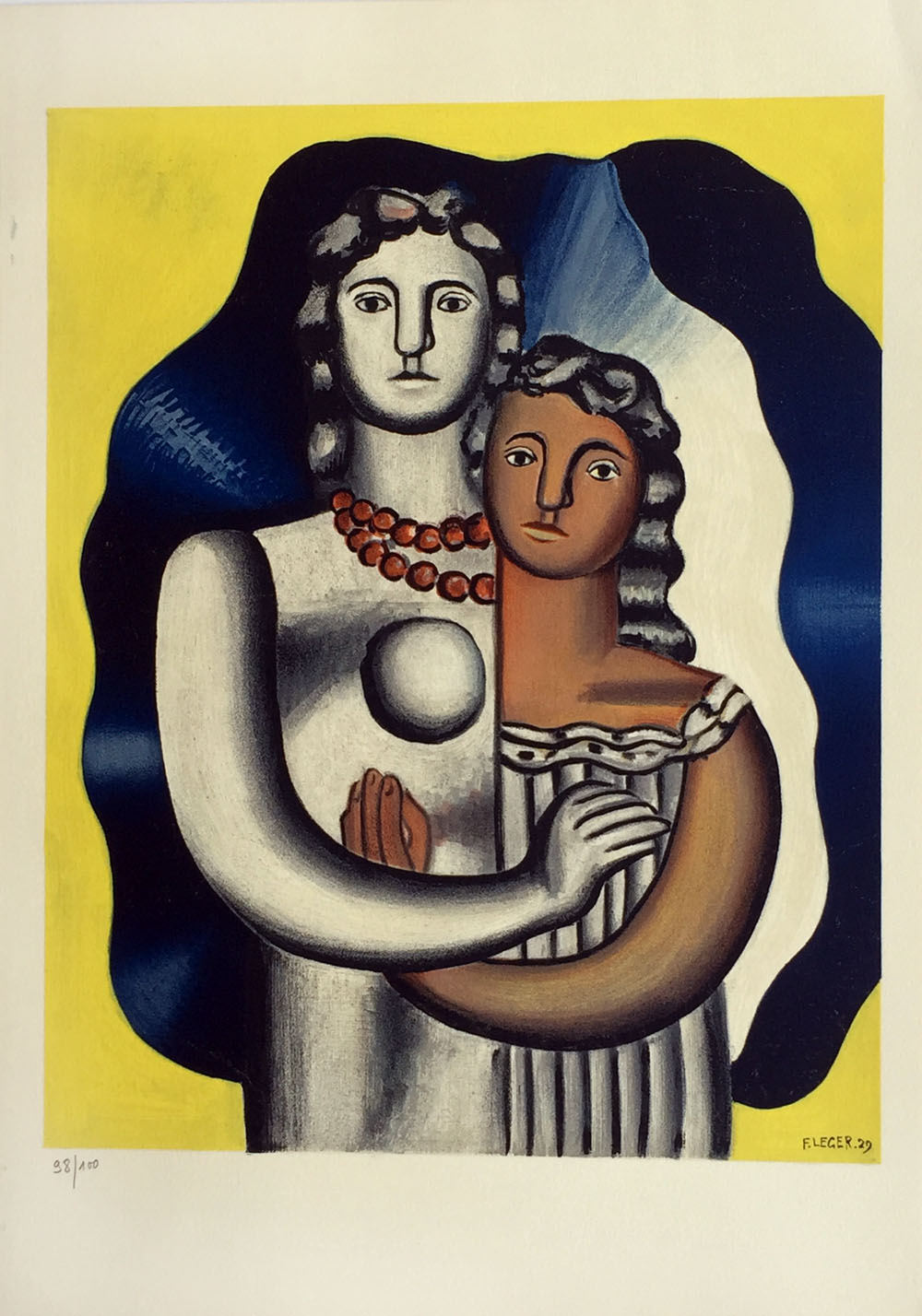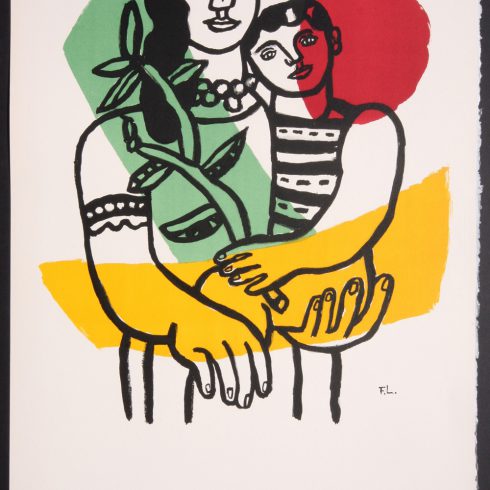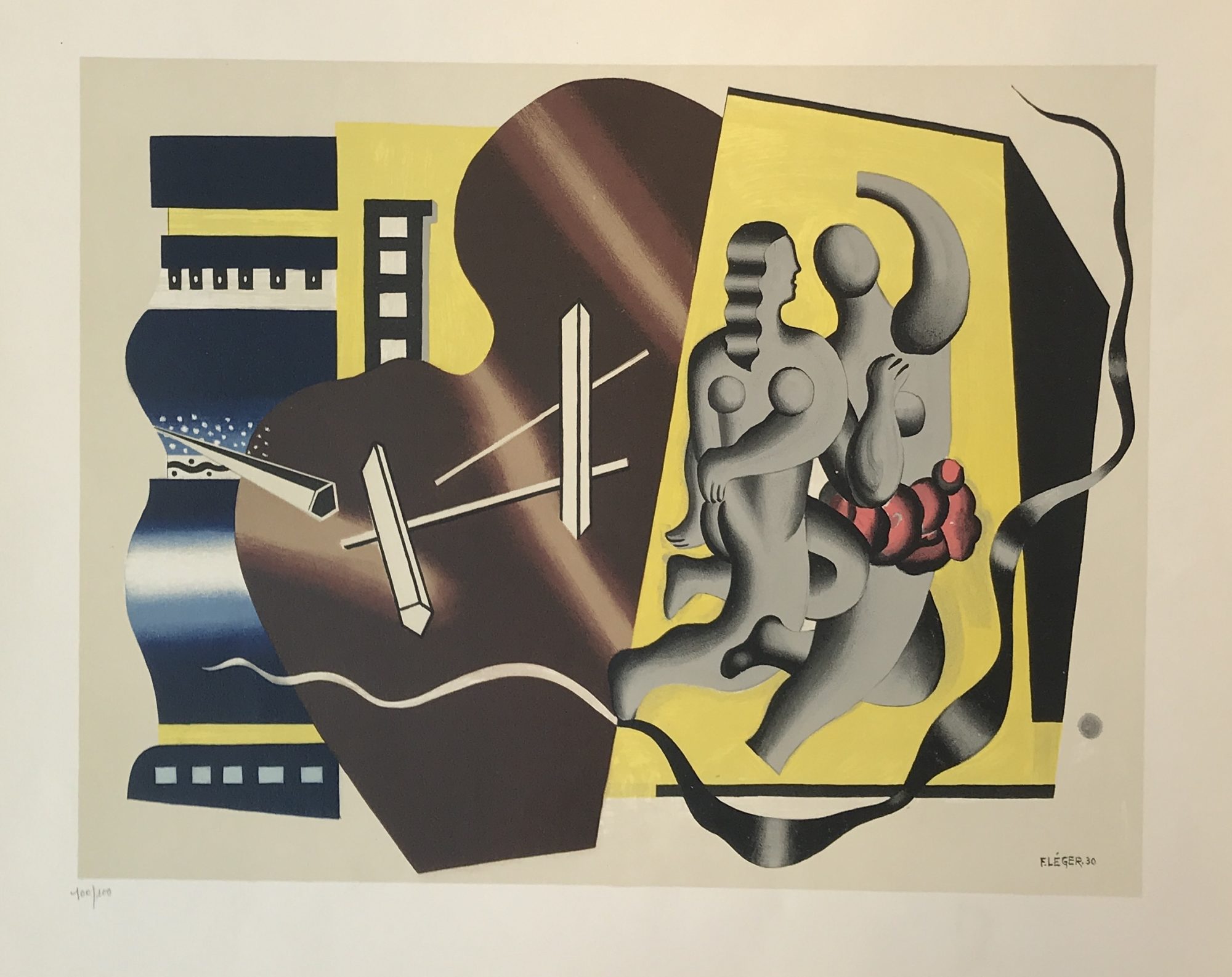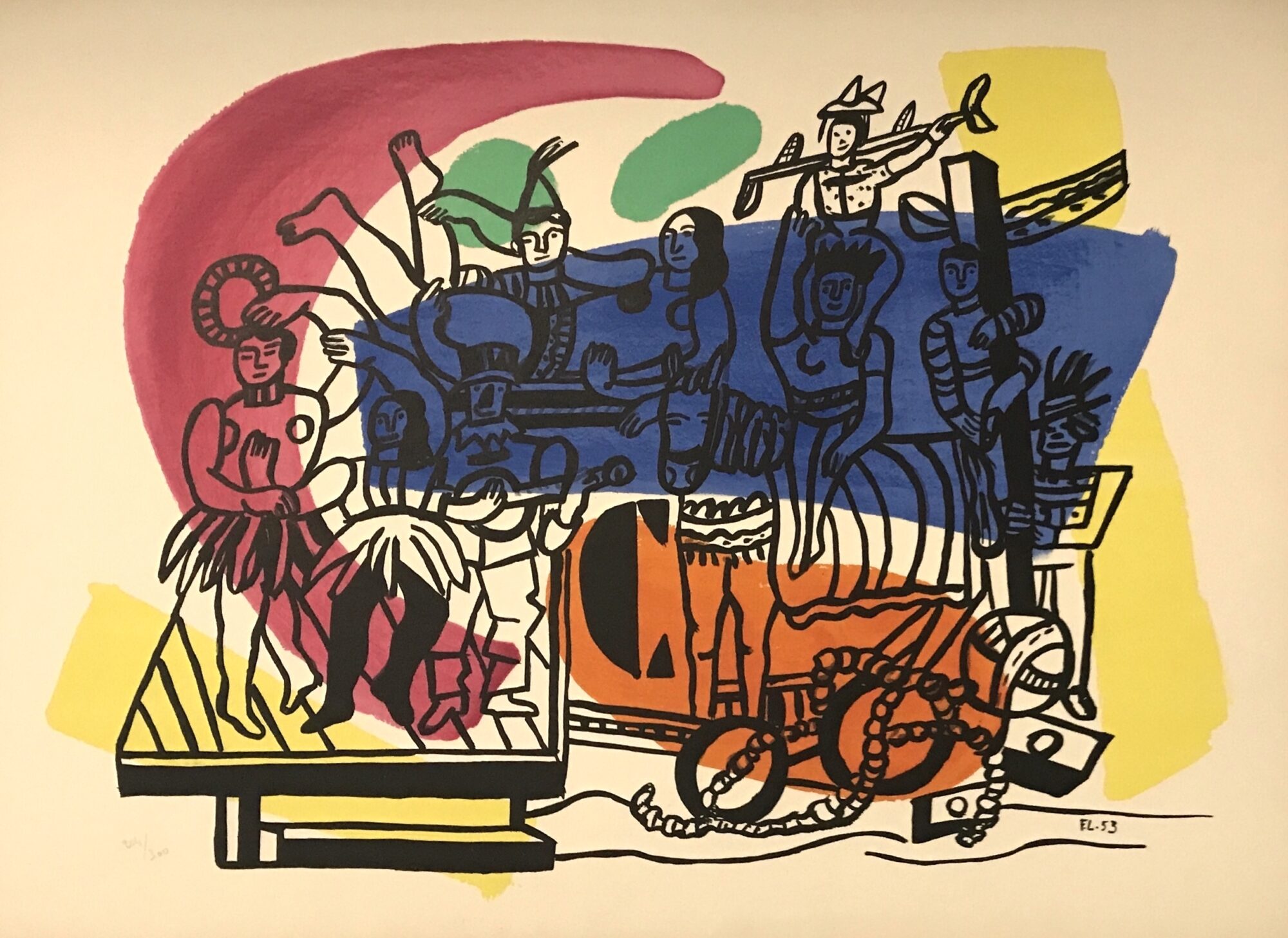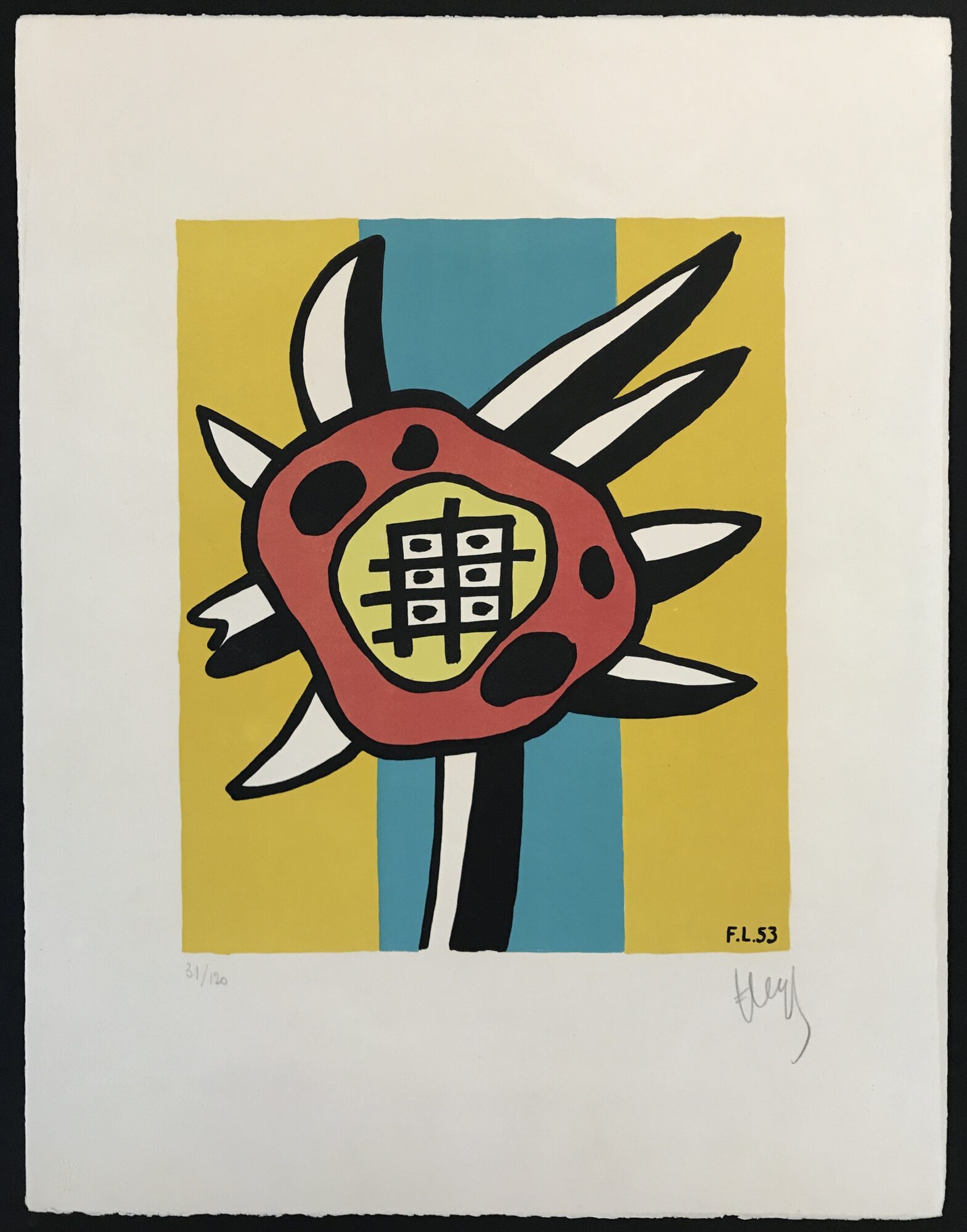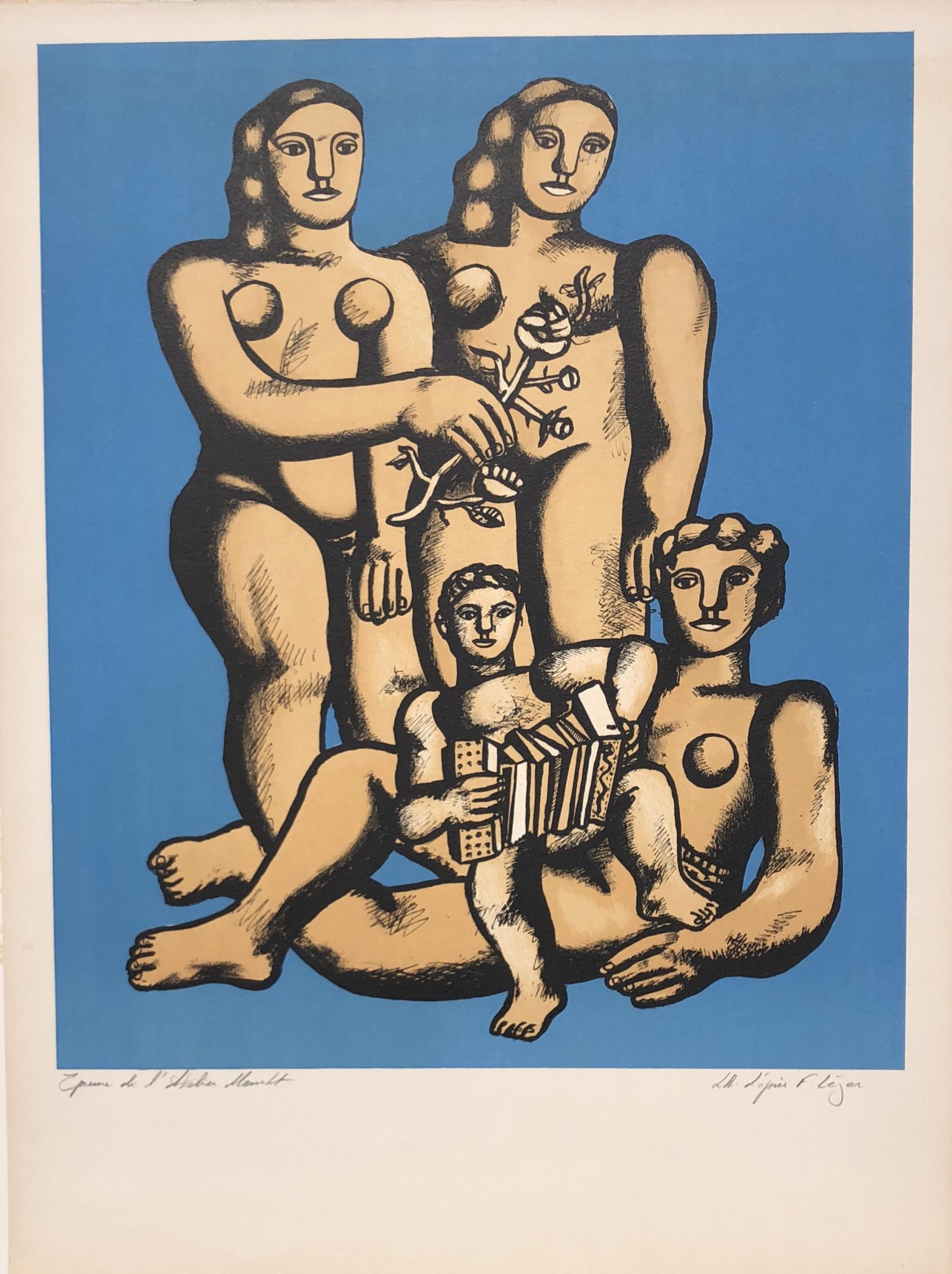Fernand Leger – Les Deux Figures
Fernand Leger, Les Deux Figures c.1950 is an original Lithograph print in colors, from the deluxe edition of 100 with wide margins, for ‘Derriere Le Miroir’. This print is numbered in the lower left from the edition of 100.
In the mid-1920s Léger was associated with the French formalist movement called Purism, which had been launched by the painter Amédée Ozenfant and the painter-architect Le Corbusier. Purism was an attempt to strip Cubism of its decorative aspects; Léger consequently adopted flatter colours and bold, black outlines in his work. From then on, his art was essentially figurative, and the only significant change in his style occurred late in his career, during World War II, when he began to draw his figures in gray and black and to use bands of colour as abstract background elements.
| Title | Les Deux Figures |
|---|---|
| Medium | Lithograph |
| Year | c.1950 |
| Edition | 100 |
| Catalogue Raisonné | NA |
| Signature | Numbered |
| Size | 15.75 x 11 (in) 40 x 28 (cm) |
| Price | Price on Request |
Description
Fernand Leger, Les Deux Figures c.1950 is an original Lithograph print in colors, from the deluxe edition of 100 with wide margins, for ‘Derriere Le Miroir’. This print is numbered in the lower left from the edition of 100.
In the mid-1920s Léger was associated with the French formalist movement called Purism, which had been launched by the painter Amédée Ozenfant and the painter-architect Le Corbusier. Purism was an attempt to strip Cubism of its decorative aspects; Léger consequently adopted flatter colours and bold, black outlines in his work. From then on, his art was essentially figurative, and the only significant change in his style occurred late in his career, during World War II, when he began to draw his figures in gray and black and to use bands of colour as abstract background elements.
Léger founded the Académie de l’Art Moderne at his studio in 1924 with fellow French Cubist painter Amédée Ozenfant (1886–1966). The Académie lasted until 1939, and during this time he developed Tubism—a style in which human body parts and architectural elements are rendered with three-dimensional shading to look like voluminous tubes and cylinders. Also in 1924, he completed his first film, Ballet Mécanique. Léger relocated to New York to escape World War II, and taught a lecture series at Yale which many artists attended, influencing New York School painters. Léger returned to France in 1946, where he became intensely-involved with the Communist Party. In the 1950s, the series paintings Builders, Campers, and The Big Parade illustrated a concern for the common man, inspired by Léger’s view of electrical workers atop poles. In his effort to have his works seen by the common man he temporarily installed several of the Builders paintings in the canteen at the Renault factory near Paris, where they met mixed reactions. He continued to travel and produce works in various media until his death in 1955.
Additional information
| Title | Les Deux Figures |
|---|---|
| Medium | Lithograph |
| Year | c.1950 |
| Edition | 100 |
| Catalogue Raisonné | NA |
| Signature | Numbered |
| Size | 15.75 x 11 (in) 40 x 28 (cm) |
| Price | Price on Request |


